Granular Synthesis: Mangling Sonic Pixels
Imagine a digital photo, consisting of hundreds, or maybe thousands of pixels. Each pixel has its own color, brightness, and size (among many other parameters). Together these pixels create a texture, and when organized in their correct order, they create a recognizable image. Now imagine taking each individual pixel and placing them in a random order. Imagine changing the color and brightness. Go a bit further and imagine changing the size of each pixel, creating little spaces of nothingness in between them. The image we end up with is far different from the original. Unrecognizable, even.
Now imagine the same process with sound, taking small fragments of sonic information and reordering their placement, transposing their pitch, truncating their size, and designating their density - that’s granular synthesis.
Instead of visual pixels, we’re dealing with auditory grains.
Granular synthesis only exists within the digital domain and therefore only deals with samples. These samples can be digitally computed waveforms like sine, triangle, sawtooth/ramp, or square (remember wavetables?) or captured recordings like claps and snaps, a purring cat, or the applause of an audience. In the modular world, samples can even be captured from live recordings of the other modules within the system.
Now granular synthesis is a deep and vast science with entire textbooks written on the subject. If you’d like to go deeper, I highly suggest the book Microsound, by Curtis Roads or The Csound Book by Dr. Richard Boulanger. What we’ll be dealing with is granular synthesis within the modular realm - different styles of implementation, what modules “do the thing”, and the associated terminology.
Buzzwords:
Granular synthesis comes with a lot of commonly used buzzwords to help describe the process and outcome. We often talk about grains, textures, particles, clouds, slices, splices, and genes. Every module has its own set of buzzwords and it's more or less safe to say that they are all pretty much referring to the same thing - tiny bits of audio.
Granular Synthesis Modules:
There are plenty of granular synthesis modules in Eurorack, but I’m only going to focus on “the big four.”
- Instruō arbhar
- Make Noise Morphagene (and its predecessor Phonogene)
- Qu-Bit Electronix Nebulae V2 (and its predecessor Nebulæ)
- Mutable Instruments Clouds (discontinued, but recreated in many different forms: Grayscale Supercell, Grayscale Microcell, After Later Audio Monsoon, After Late Audio µBurst, Instruō µClouds)
Buffers:
Before sound can be granularly processed, it needs to be recorded into a buffer. The arbhar can record around 10 seconds of mono audio in up to 6 buffers, which they call, “Layers.” The Morphagene can record up to 2.9 minutes of stereo audio per buffer, which they call, “Reels.”
The Nebulae can record up to 5 minutes of stereo audio. Clouds can record anywhere from 1, 2, 4, or 8 seconds of audio based on its sampling rate, bit resolution, and number of channels (mono or stereo). The big difference here is that by default, Clouds is always recording and immediately processing audio (in part due to its small buffer size) whereas the other three modules need to be set to constantly record.
Looping:
Some granular synthesis modules like the Make Noise Morphagene and Qu-Bit Electronix Nebulae V2 allow for samples to continuously loop over time. All this means is that when the sample reaches its end point, it immediately resets to its start point. The Nebulae has controls for the loop start point and the loop size, allowing for the sample to loop around at different sections of the buffer while also shortening the global size of the loop. The Morphagene is really more of a tape-splicing emulator, and allows for splices to be made which creates shorter loops out of the original loop. Because the splices can be made so tiny, they can become grains, which they call “Genes.”
Vari-speed Vs. Phase Vocoding:
One of the biggest differences between granular synthesis modules is how pitch changes are implemented.
Some modules like the Morphagene (and its predecessor, the Phonogene) make use of a vari-speed control. Vari-speed means that the pitch of the sound is directly proportional to the speed at which the loop is playing. This method comes from how analog tape works, where speeding up a loop by 2x the original rate will result in audio playback at 1 octave above the original pitch. Similarly, slowing a loop down by 0.5x the original rate will result in audio playback at 1 octave below the original pitch. Reversed audio works the same way. It’s important to understand that if playback is set to 0x the original rate, playback will stop, creating silence.
The Nebulae, however, uses a computer music method called phase-locked vocoding. This allows for pitch and speed to be changed independently. Again, playback can be sped up, slowed down, and reversed. Unlike vari-speed, when the speed of a phase-locked vocoder is set to 0, playback does not stop, but actually freezes the buffer.
Pitch Deviation:
The arbhar and Nebulae both have internal random pitch deviation controls that force each grain to generate at a random pitch. arbhar’s pitch deviation control is found as a physical knob on the panel, and Nebulae’s pitch deviation control is found through a shift function.
Windowing:
In granular world, we often talk about windowing. Essentially it's just a fancy word for the amplitude envelope of the grain. By now, after playing with envelopes and VCAs in subtractive synthesis, you’re aware that many different types of envelopes exist and they all have a different effect on the sound.
- Arbhar can morph between a Square, to a Sine, to a Sawtooth window.
- Nebulae can morph between Gaussian, Blackman-Harris, Sawtooth, Bartlett, Ramp, Hamming, and Square.
- Clouds can morph between Square, Triangle, Hann, and then transform into a diffuser which smears the transients of the waveform. This control on Clouds is called, “Texture.”
Rate, Density, & Length:
The rate at which grains are generated varies from module to module.
For instance, on Clouds, the density and size controls both determine the rate of grain generation. If the size of the grains is increased, but the density value remains constant, grains will generate slower. Obviously the opposite is true, where if the size of grains is decreased, but the density value remains constant, grains will generate faster. Similarly, the same is true when the size value remains constant and the density value is changed.
arbhar behaves the same way, where the intensity and length controls both determine the rate of grain generation. Same story, different book.
Nebulae, on the other hand, has a dedicated density control that is similar to changing a clock rate on a control module. It’s grain length control, which they call, “Overlap,” changes the length of the grains, but does not influence the rate at which grains are generated.
WIth the right settings, all three of these modules can produce polyphonic grains that play on top of each other, allowing the user to create chord-like harmonic structures, or noisey madness.
It’s also important to note that all three of these modules have the ability to generate grains asynchronously, meaning that grains are not forced to generate at a steady rhythm. Grains can also be externally clocked to be in time with the rest of the system.
Conclusion:
Within the familiar sounds we know and love is an entire universe of particles, clouds, textures, and microsounds. I encourage everyone to experiment with different and interesting source material and explore what lies beneath the surface and between the lines. The more complex the source material is, the more vast the microsonic universe.
References:
To hear some amazing examples of granular synthesis, I’d like to point you towards these very important pieces of music and video references:
- Riverrun by Barry Truax (1986)
- Audio examples from Microsound by Curtis Roads (courtesy of MIT Press)
- Curtis Roads The Breakdown / Getting Granular / Build It Up
- What is Granular Synthesis with Arbhar by Omri Cohen
- Granular Synthesis EXPLAINED by White Noises
 All Modular Brands
All Modular Brands
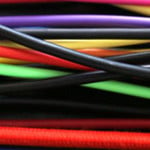 All Patch Cables
All Patch Cables
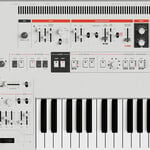 Synthesizers
Synthesizers
 Controllers
Controllers
 Drum Machines
Drum Machines
 Sequencers
Sequencers
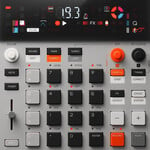 Samplers
Samplers
 Soundmakers
Soundmakers
 DIY
DIY
 Effects
Effects
 Cables
Cables
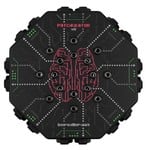 Audio/MIDI
Audio/MIDI
 Video
Video
 Music/Media/Gifts
Music/Media/Gifts
 Accessories
Accessories
 Used
Used
 Vintage
Vintage
 DEALS
DEALS
 Modular
Modular
 Synthesizers
Synthesizers
 Controllers
Controllers
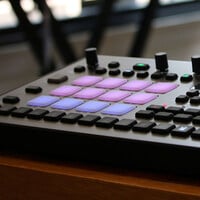 Drum Machines
Drum Machines
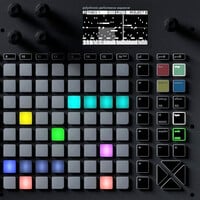 Sequencers
Sequencers
 Samplers
Samplers
 Soundmakers
Soundmakers
 DIY
DIY
 Effects
Effects
 Cables
Cables
 Audio/MIDI
Audio/MIDI
 Video
Video
 Music/Media/Gifts
Music/Media/Gifts
 Accessories
Accessories
 Used
Used
 Vintage
Vintage
 DEALS
DEALS








Comments